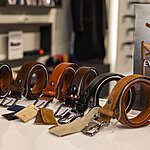Your Guide to Product Photography Styles
Your Guide to Product Photography Styles
When it comes to promoting and disseminating your brand, product photography is essential. Done properly, it can become one of your strongest allies. However, it is wrong to think of product photography as only setting an object against a white background. There are a multitude of other ways to display your products.
A product photoshoot should be based on your type of business, the communication and marketing strategy you’ve established, your target audience, and how you intend to use the images – for example, photos for online catalogs, printed ads, social networks and outdoor marketing must all be different.
Product photography—What is it, exactly?
The goal of product photography is clear: To highlight a certain product and grab the interest and attention of your target audience, which will encourage the purchase.
Would you buy from an e-commerce brand who only features a descriptive text of its product? Of course not, because the trust level radically descends when there is no visual content to illustrate the characteristics described by the text.
Product images must be created according to the type of product being featured and, regardless of the style of the photos, each one must clearly highlight the product’s distinct features.
Professional product photography will help segment the market and solidify your brand’s position in it.
Types of Product Photography
1. Studio Photography
This type of photography is most commonly associated with this terminology. Created in a studio, and widely used online and in directories, these photos present your products in the simplest way.
Depending on the textures, packaging, and materials used in each product, a photographer must adjust to different factors when shooting. The result should always be cohesive and similar. Regardless of whether it is a piece of clothing, a pair of shoes or a bottle of perfume, the result will be a photograph focused on driving sales of the product by presenting its characteristics and/or features in the most transparent way.
There is rarely any creation involved in this style of product photography. It is common to shoot all the products at once, in a studio, to ensure the products all look the same. In this type of product photography, shadows can be sharpened to highlight the product’s shape or a particular feature, and the background color can change according to the object you wish to highlight.
2. White Background Photography
Widely used in e-commerce and directories, this is the most common of all product photography. Here, the product is portrayed in a clean, non-distracting way. It is often combined with other types of product photography to present a concept. The only variation is the use (or suppression) of shadows, which gives the product depth.
3. Set Photography
When a product has a certain feature, such as a color or a style, and is sold in different versions, it may be best to photograph all the options in a single image, so the customer can immediately see all their choices (which eliminates having to browse the product page to get this information).
Again, this type of photography is usually followed by individual photos of the products, in order for the customer to see the product in the color that interests them the most accurately.
This style of product photography is a splendid opportunity to feature special accessories or other related products which you sell separately.
4. True Environment Photography
Presenting the product in a real-life environment, in a context with a particular lifestyle, could be the optimal solution for certain products. Today, many brands are opting for this style of photography because they choose to associate their brand’s history and values with their products. This style is widely used in the fashion and decoration industries, where it promotes a specific standard of living and creates empathy with the target audience. This gives the customer the opportunity to see themself in the photos featured. More than a product, your brand sells the lifestyle and environment your customer is looking for, and the link between your customer and your brand only grows stronger.
5. Photo Composing
Whether it’s photographs taken from above, showing a set of carefully positioned products (which is called a “flat lay”), or at other angles, the placement of elements related to the product is often a great idea. This must be done a certain way, as it is important to shine the spotlight on the product you’re looking to sell. A photo featuring added elements tells a story and creates a connection with those who see it. What’s more, it is much more interesting and appealing to a customer than a photo of an object set against a white background.
Because it presents values, tastes, and lifestyles, this format works exceptionally well on social media. It is a great way to connect with your target audience, boost sales, and grow your brand.
Exploring your creativity (and that of the photographer’s) is one of the best things about product photography. You must get to work and experience different things, because even unattractive products, whose appeal rests solely on its functionality, can lead to extraordinary photographs depending on how creative you get.
Here’s a good example: Instead of photographing a roll of simple wrapping paper against a white background, perhaps you can wrap another object with that paper (that is its purpose, after all) or create a layout with related items on a table? Trim a Christmas tree, set presents wrapped with the same paper underneath it, and you’ve got interesting content for the entire Holidays season!
You should never limit a product to a single type of photography, especially since different communication channels require different styles. What’s important is to understand who you wish to communicate with, to understand the platform where the image will be displayed, and, of course, to ensure that each image represents your brand and its values. Even on an e-commerce platform or in a directory, it’s advantageous to combine various photography styles and several angles so you can offer your clients a better idea of the products you are offering them.
Are you ready to throw the spotlight on your products?
Get in touch with me and we’ll set up a consultation call to get you started!
sebduperphoto











Comments are closed.